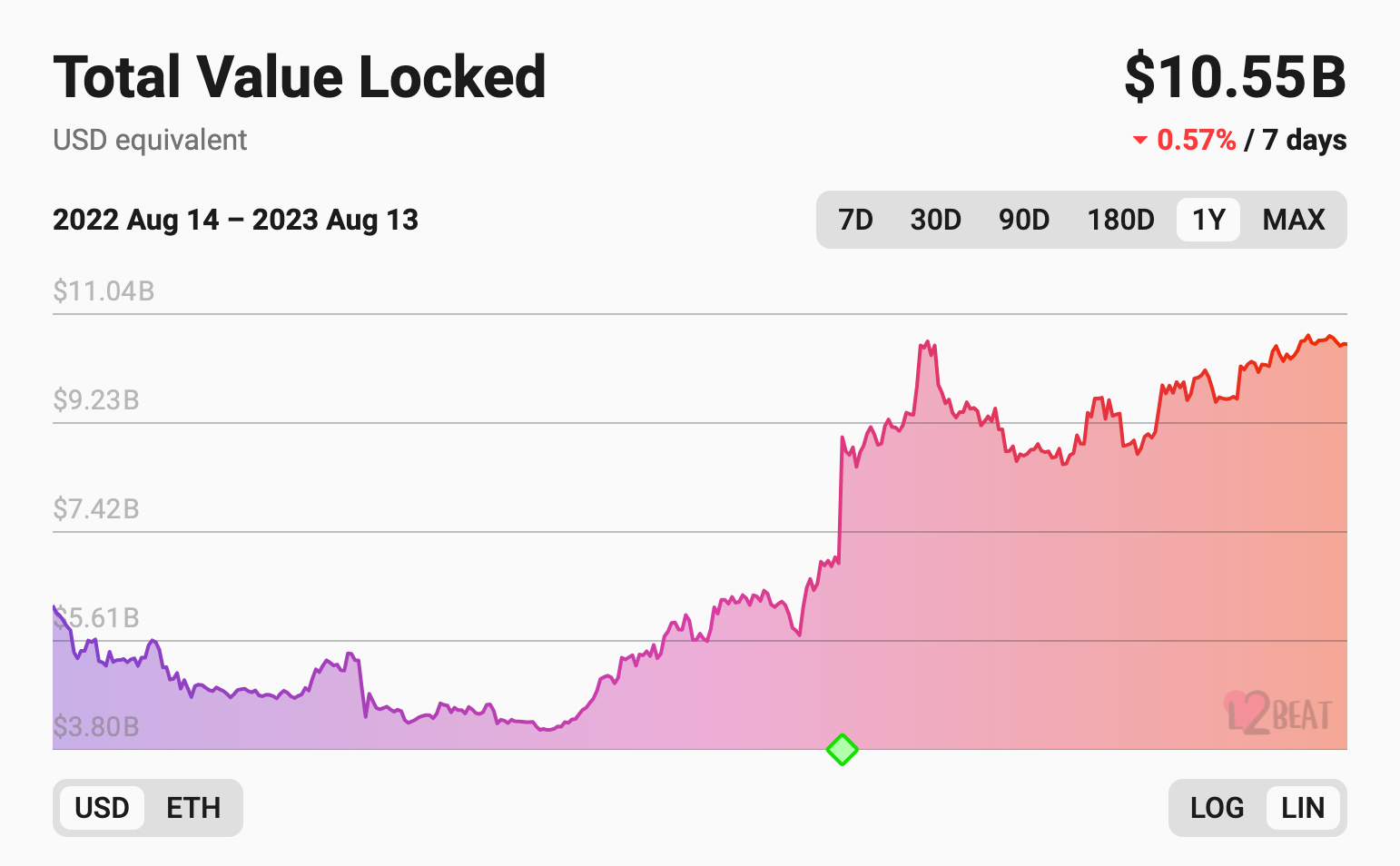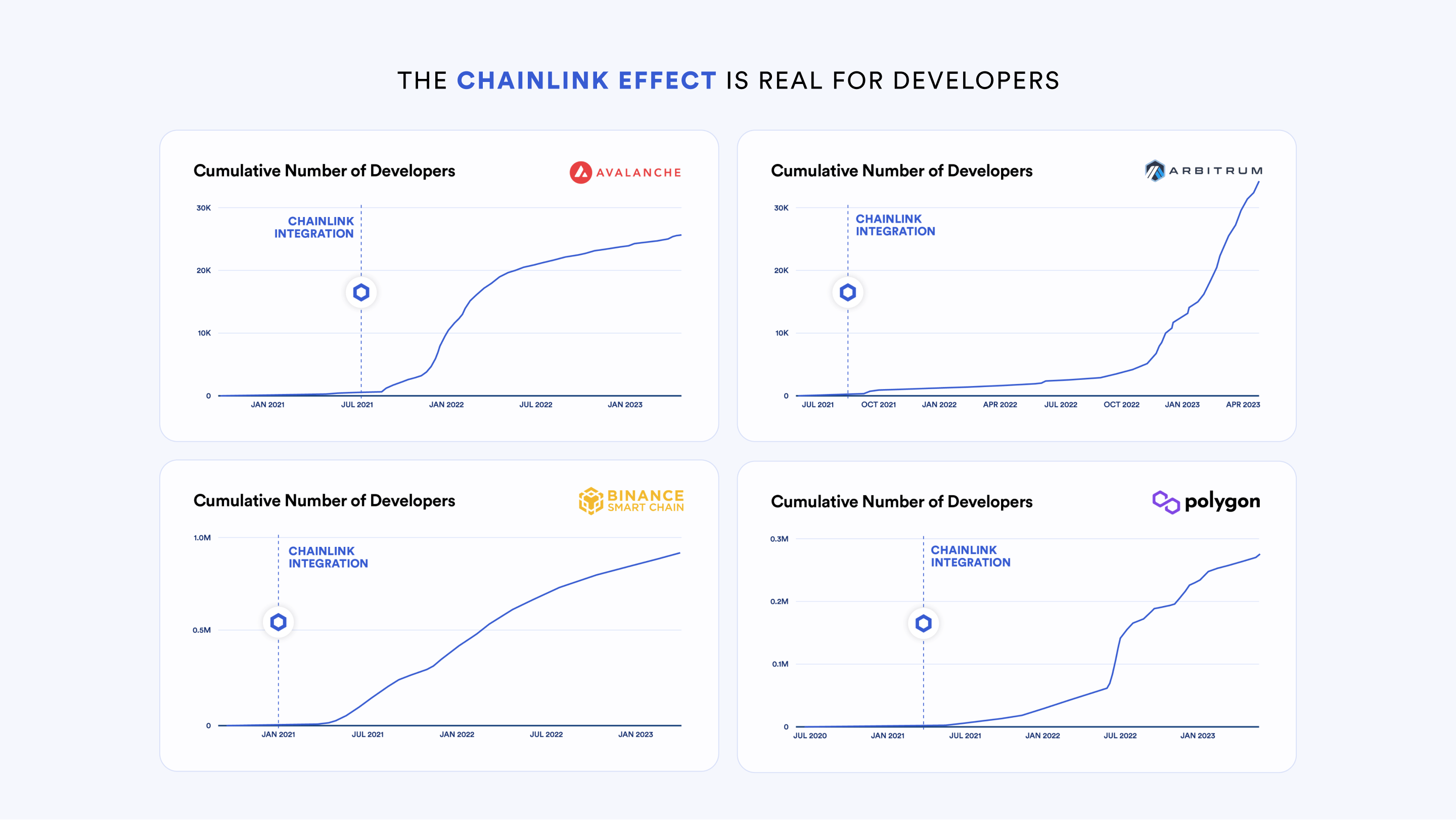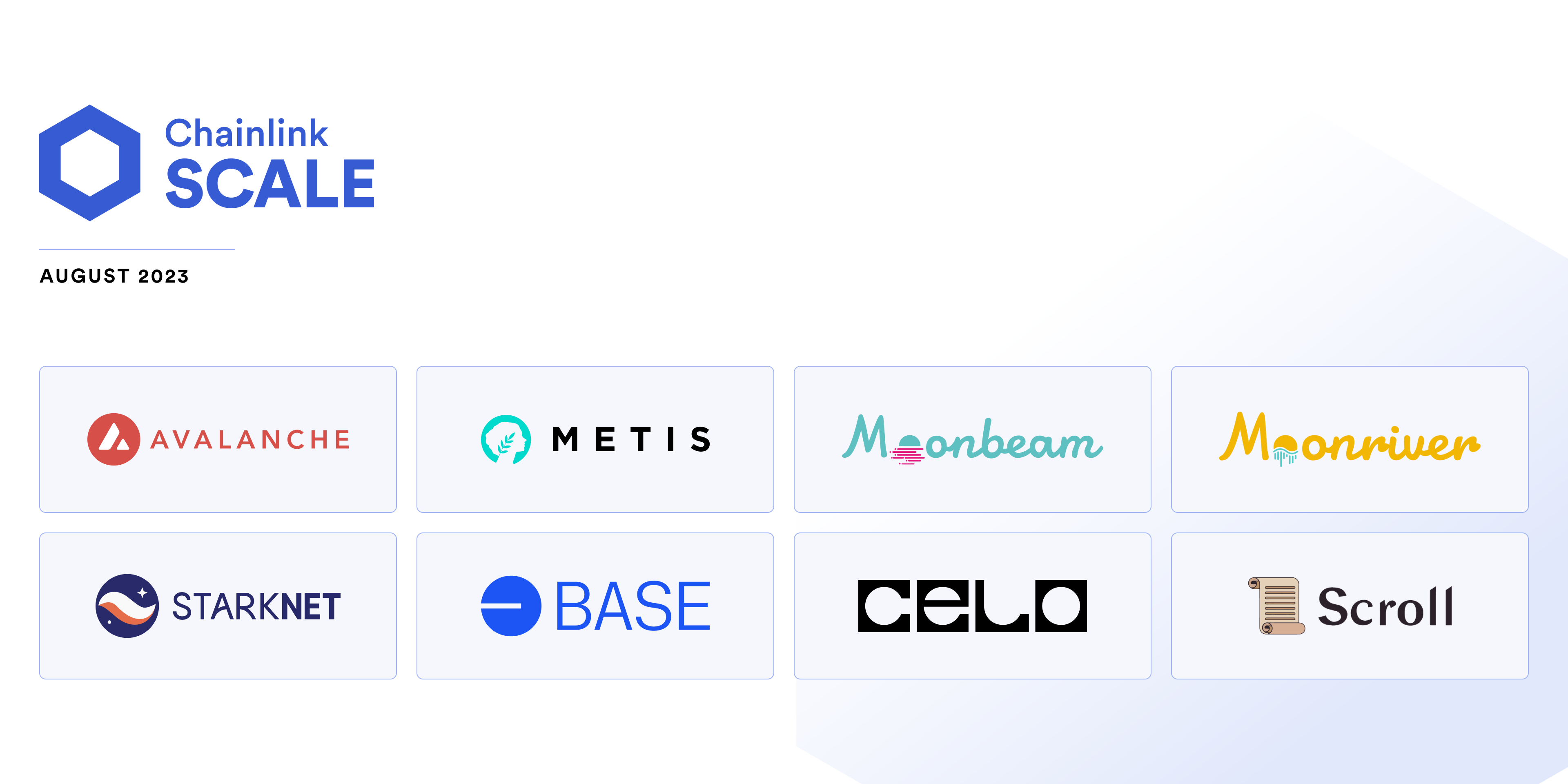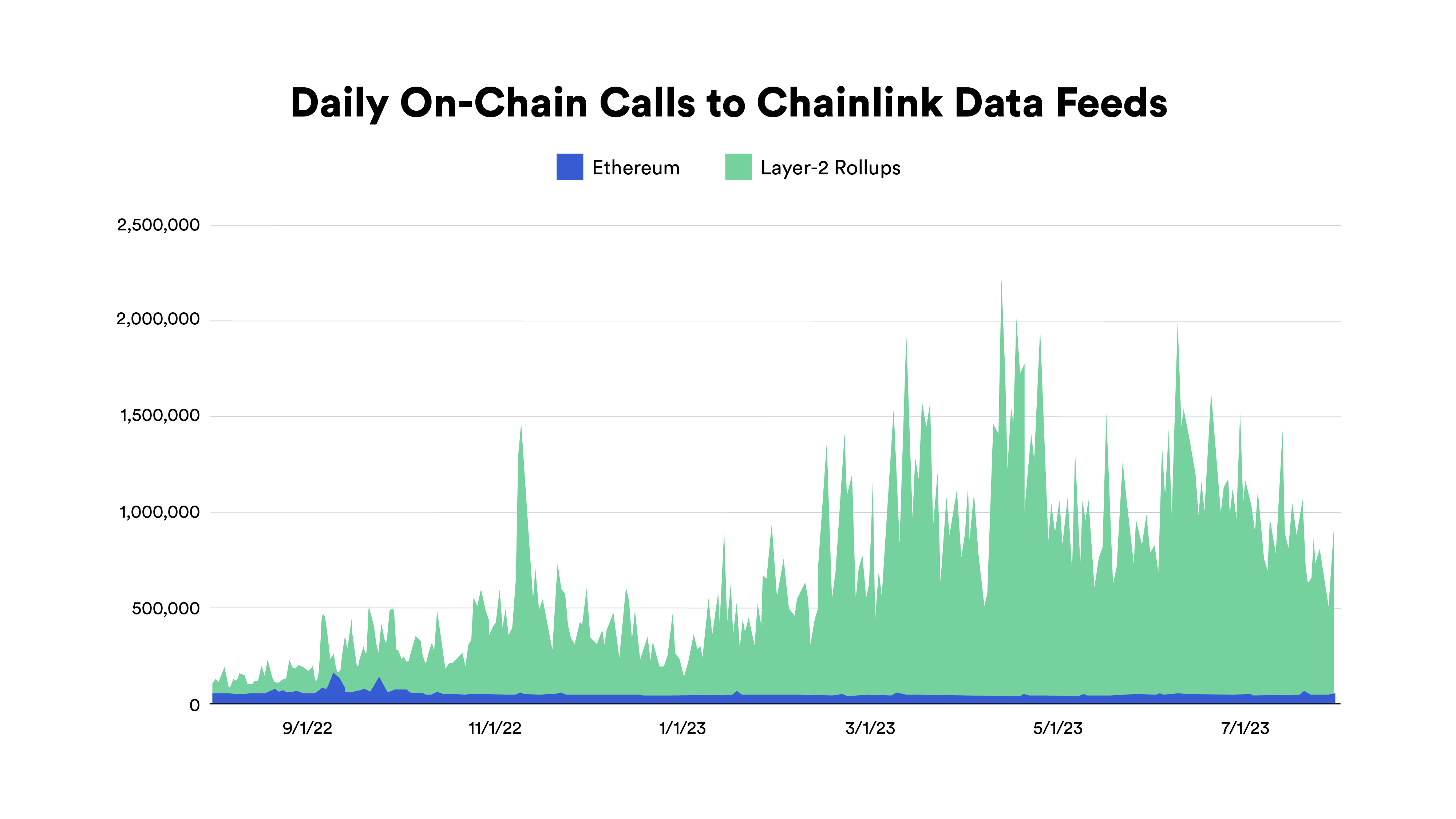The Role of Layer-2 Rollups and Chainlink in Scaling the Ethereum Ecosystem
Blockchain technology represents a paradigm shift in how society exchanges value, with transactions executed on decentralized, trust-minimized ledgers not controlled by any central authority. However, blockchain scalability currently remains one of the largest bottlenecks preventing Web3 from reaching a global audience.
Ethereum is one of the most widely used blockchains with tens of billions of dollars locked in its DeFi ecosystem; however, its throughput is constrained to maintain its decentralized properties. In order to increase throughput and reduce transaction costs for users, the Ethereum community has laid out ambitious plans for scaling the network through the deployment of layer-2 rollups.
As the leading blockchain-agnostic Web3 services platform, Chainlink aims to support the growth and adoption of every blockchain ecosystem by providing secure access to external data (e.g. market data), off-chain computation (e.g. automation), and cross-chain interoperability (e.g. token bridges) required by smart contract applications. As such, Chainlink supports blockchains in their path to scaling so that they can help realize the goal of creating a world powered by cryptographic truth.
In this blog, we’ll define the ways in which Chainlink is aligned with the Ethereum community’s approach of scaling its ecosystem via layer-2 rollups and how Chainlink’s approach to Data Feed deployment is evolving to support the adoption of Ethereum’s layer-2 rollup networks.
How Ethereum is Scaling Via Layer-2 Rollups
In 2015, the Ethereum blockchain launched on mainnet, enabling developers to write and deploy Turing-complete smart contracts, serving as tamper-proof programs that run following predefined logic. Over time, as the network grew in adoption, transaction fees rose as blockspace was constrained to keep verification costs low.
In 2020, Vitalik Buterin proposed a rollup-centric Ethereum roadmap, describing a path forward for scaling the Ethereum Network involving the deployment of layer-2 rollups—scaling solutions that involve executing transactions off-chain while storing raw batched transaction data on the baselayer, with its validity checked by fraud proofs or validity proofs.

Since the rollup-centric roadmap was published, the Ethereum community has rallied behind this scaling approach, with a growing number of optimistic rollups, zk-rollups, and validiums launching on mainnet, now totaling over $10B in total value locked. Future planned upgrades to the Ethereum baselayer, such as EIP-4844 (Proto-Danksharding), further support this scaling vision by lowering the costs of submitting batches of transaction data on-chain by orders of magnitude, further reducing the costs of rollup execution.

Adoption of these layer-2 networks continues to accelerate, providing developers and users with low-cost environments to deploy and interact with smart contracts. Rollups are becoming increasingly time tested and robust, with research and development progressing at a rapid speed. There are now approximately 4.9x more transactions taking place on Ethereum layer-2 networks compared to the Ethereum baselayer.

Chainlink’s Alignment With Scaling Ethereum
The Chainlink Network originally launched on mainnet in 2019, with Ethereum as the first supported blockchain network with Price Feeds. Since then, Chainlink has expanded to provide a broader array of oracle services that now operate across 15 distinct blockchain mainnets, including many of the leading Ethereum layer-2 rollup networks, such as Arbitrum, Base, and Optimism.
Chainlink has long been aligned with the Ethereum community’s vision of scaling its ecosystem through the deployment and adoption of layer-2 networks. Rollups not only provide users with a better user experience when interacting on-chain, but Chainlink oracle services also benefit from the higher throughput and lower gas costs. This enables a greater amount of data to be published on-chain via the deployment of more Data Feeds and Data Feeds with faster update frequencies. The result is unlocking new Web3 applications that were not feasible on the Ethereum baselayer.
Over the past year, this alignment has accelerated through the introduction of Chainlink SCALE—Sustainable Chainlink Access for Layer 1 and 2 Enablement. The SCALE program is a Chainlink Economics 2.0 initiative centered around accelerating the growth of blockchain and layer-2 ecosystems while enhancing the economic sustainability of the Chainlink Network. Participating blockchain ecosystems can fast track smart contract innovation by covering the operating costs (e.g. transaction gas fees) of Chainlink oracle services on their networks for a period of time before the operating costs of oracle services can be entirely covered by dApp user fees. Participation in the SCALE program is also a determining factor in prioritizing blockchains for the integration of additional Chainlink services.
As blockchain ecosystems in the Chainlink SCALE program mature, the operating costs of oracle services can increasingly transition toward being fully covered by dApp user fees. This moves Web3 ecosystems toward a holistic economic model that is more viable long term for all participants:
- Blockchains help grow their dApp and developer ecosystems so they can attract larger user bases and support their chain’s long-term cryptoeconomic security.
- Chainlink helps grow blockchains via the deployment of oracle services so their dApp ecosystems can power real-world use cases that generate value.
- dApps have a runway to create sustainable fee-generation models based on real value-add services so they can eventually support the full backend costs of blockchain and oracle infrastructure through user fees.

A number of Ethereum layer-2 rollups have joined the SCALE program, including Base, Metis, Scroll, and StarkNet. Furthermore, Celo is also a member of the SCALE program and is in the process of becoming an Ethereum layer-2 network.

By reducing the operating costs of oracles within these layer-2 ecosystems, developers gain access to greater volumes of data and are able to create more advanced, data-rich applications. The result is a virtuous cycle of innovation, leading to better applications, more adoption, and greater sustainability for both the underlying blockchains and oracle infrastructure. Many Chainlinked dApps, such as Gains Network, Lyra Finance, and Dopex, have migrated to Ethereum layer-2 networks and experienced significant growth in adoption as a result.
Furthermore, with the introduction of the Cross-Chain Interoperability Protocol (CCIP), the multi-chain ecosystem of Ethereum rollups is becoming increasingly interconnected, enabling users to move liquidity and data across rollups as desired and developers to create smart contract applications that natively operate across multiple rollups.
Accelerating the Economic Sustainability of Oracles in the Ethereum Ecosystem
In order for the Ethereum ecosystem to have continued reliable access to oracle services, such services need to achieve economic sustainability. Given their increased throughput and reduced transaction fees, oracle services operating on layer-2 rollups have a significant head start in achieving such sustainability compared to operating on the Ethereum baselayer. We also see growing demand for oracle services on layer-2 rollups, with there being approximately 48x the amount of on-chain calls from dApps to Chainlink Data Feeds over the past 12 months on Ethereum rollups compared to the Ethereum baselayer.

Therefore, in alignment with the Ethereum community’s rollup-centric approach to scaling, and taking into consideration the growing demand for oracle services on layer-2 networks, a greater number of Chainlink Data Feeds will be deployed on rollups to match demand. It is also expected that the trend of layer-2 adoption will continue, particularly as a greater number of applications transition from the Ethereum baselayer to Ethereum-settled layer-2 rollups.
In parallel, we anticipate a relative increase in the rate at which Data Feeds with no or low usage on the Ethereum baselayer are scheduled for deprecation. Specifically, this encapsulates Data Feeds that do not have a viable path to economic sustainability due to limited demand relative to operating costs. This would result in the freeing up of resources which can be used to support Data Feed deployments on other networks such as layer-2 rollups.
This Data Feed deployment strategy not only supports the long-term economic sustainability of the Chainlink Network, but also helps accelerate the economic sustainability of the DeFi ecosystem as a whole as well as supports the Ethereum community’s vision for applications to operate on layer-2 rollups that use the Ethereum network as a final settlement layer.
The Multi-Rollup Future of Ethereum
The Ethereum community’s vision for scaling via layer-2 rollup networks presents an exciting opportunity for the Ethereum ecosystem to achieve the user experience and transaction throughput required for smart contracts to reach broader adoption. With Chainlink offering developers all of the oracle services they require to build advanced smart contracts on layer-2 rollup networks, the Ethereum ecosystem can more rapidly realize its vision for scaling the Ethereum ecosystem’s throughput.
—
Disclaimer: This post is for informational purposes only and contains statements about the future, including anticipated product features, development, and timelines for the rollout of these features. These statements are only predictions and reflect current beliefs and expectations with respect to future events; they are based on assumptions and are subject to risk, uncertainties, and changes at any time. There can be no assurance that actual results will not differ materially from those expressed in these statements, although we believe them to be based on reasonable assumptions. All statements are valid only as of the date first posted. These statements may not reflect future developments due to user feedback or later events and we may not update this post in response.
